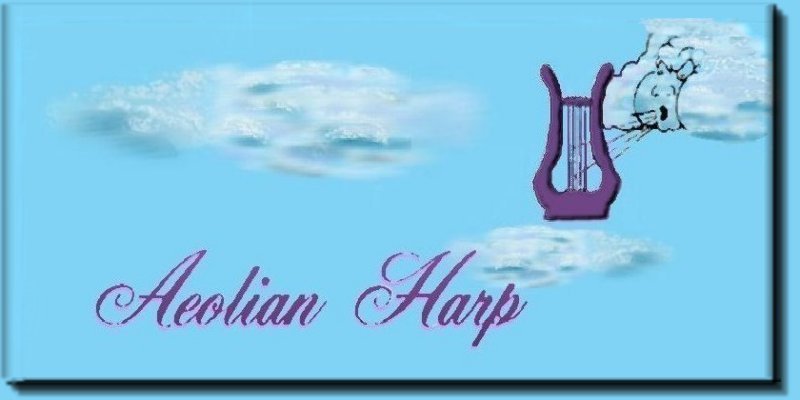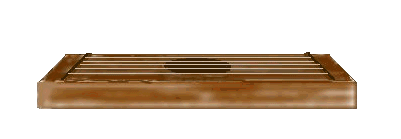


|
"Symphony of the Gods" The Aeolian harp was said to have been the instrument of Aeolus, the Greek god of wind. It is played not by human hands, but by the wind. Its melodies and harmonies are not those that we have chosen. They are the improvisation of nature itself. The first Aeolian harps were constructed by the ancient Greeks. The origins of the modern Aeolian harp date back to the 17th century. The present day instrument is also known as the "wind harp". One type consists of a rectangular sounding board with one hole in the center and a bridge on each end, over which strings are stretched. The number of strings varies. I would say the average number ranges from five strings to twelve. The composition of the strings also varies. They could be wire, nylon, etc. They are the same length, but each one is a different thickness. The strings are attached at each end of the sounding board by tuning pegs. All strings must be tuned to the same pitch! The instrument is placed on a windowsill. The harp should be almost as long as the width of the window, and the window should be closed almost to the top of strings. There is usually a spacer or a lid on the harp to keep the window from being closed on the strings. The idea is to concentrate the wind flow on the strings. A second type of Aeolian harp is one that is meant to remain outside. These structures are usually the work of artists. They are sometimes very large, ethereal sculptures set in public places, where they are meant to catch the eye as well as the breezes. The Aeolian harp goes beyond the definition of a musical instrument. It seems to be an esoteric concept, a poetic metaphor, a scientific mystery. When I "surfed" the Internet looking for information, I found several articles of this nature but very few pertaining to music. That's understandable. There are no composers or pieces of music to discuss. Some of my links contain sound samples. To be honest, I thought that the actual sound of the instrument as background music would be offensive to some peoples' musical senses. I chose Debussy's "Arabesque #1" instead. To me, it has a breezy quality that seems appropriate. The MIDI, which I found at MIDI World, is sequenced by Andreas Delmenico.
Update
Here is a new link to a Web site about Aeolian kites and other musical instruments using the Aeolian principle. This is fun and fascinating! It also includes some instructions. Scientific References Exhibit Cross Reference- Musical Instruments - This is a section in theExploratorium. It discusses how sound is produced by various musical instruments, including the Aeolian harp. Nature Glossary- A short definition. The Aeolian Harp, Alaska Science Forum - I thought this explanation of natural phenomena was interesting. The Aeolian Interface Project - This site is really worth visiting! It discusses many aspects of the subject. Look for sound samples in the "Ethereal Aesthetic" section. Illustrations of Wind Harps Aeolian (Wind) Harp Reproductions - Pictures, sound sample, and descriptions of the windowsill type. Environmental Works - This is a site about the outdoor sculpture type of wind harp. The graphics on this page were designed by me. The wind face and lyre came from one of my graphics programs but I "painted" the clouds and wind harp.  Get your ownfree Homepage
Get your ownfree Homepage |
|
[Home]
[Contents]
[Piano, Psaltery, Dulcimer] Copyright © 2000 Nancy Bower. All Rights Reserved. |